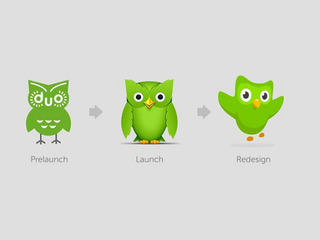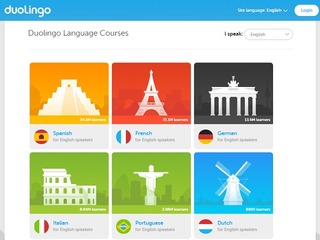How does Ginkgo Bioworks make money?
Ginkgo makes the majority of its money from the sale of its end-to-end COVID-19 testing services
Read more...
Technology has it's upsides and downsides, of course, but one of the best things about it is the way it can potentially democratize access to things that were previously prohibitive, be that healthcare with telemedicine or stock trading with Robinhood.
Duolingo is an app for learning a new language, but it's real goal it to expand access to education and to remove the barriers that currently exist.
"Although education can open the door to economic opportunity, it is also among the principal sources of inequality: the privileged can get the best education in the world, while those with fewer resources, especially in developing countries, may not be able to get even basic schooling. That is why we started Duolingo," the company wrote in its filing with the SEC.
"We believe that everyone, regardless of how wealthy they are, should have access to high quality education. And for the first time in history, the technology necessary to enable this is in the hands of billions of people, in the form of a smartphone."
That's why the company operates on a freemium model, meaning that anyone can access its content for free; they will just have to sit through an ad at the end of each lesson. If users choose, they can pay for Duolingo's subscription offering, called Duolingo Plus, which is ad-free.
In addition to being ad-free, Duolingo Plus also comes with additional learning and gamification features, such as unlimited Hearts, which the company uses to help users pace themselves. Users are typically given five Hearts, which they lose by answering incorrectly too many times, so they are encouraged to pay attention before answering. They can also be gained back by practicing a skill.
The price of Duolingo Plus changes depending on the length of the plan. A one month plan, for example, is $12.99, while a six month plan is $47.99, which comes to $7.99 per month. A 12 month plan costs $79.99, which averages out to $6.67 a month.
As of March of this year, around 5% of Duolingo's monthly active users, or roughly 1.8 million, were paid subscribers. In 2020, subscriptions accounted for approximately 73% of Duolingo's revenue, by far its largest revenue arm.
The second revenue largest arm for the company is advertising, which it shows to its users who don't have for a subscription.
"We generally enter into arrangements with the major programmatic advertising networks to monetize our advertising inventory. Our advertising revenue is primarily a function of the number of our free users, hours of engagement of our free users, and our ability to provide innovative advertising products that are relevant to our users and enhance returns for our advertising partners," the company wrote.
Advertising revenue represented approximately 17% of Duolingo's revenue in 2020.
The third largest arm is the revenue that comes from the company's second product, the Duolingo English Test, which is an online, on-demand assessment of English proficiency.
The company charges test takers a one-time fee of $49, and the results of the test are accepted by over 3,000 higher education programs around the world as proof of English proficiency for international student admissions, including 17 of the top 20 undergraduate programs in the United States, such as Yale, Stanford, MIT, Duke and Columbia.
In 2020, there were roughly 344,000 individual Duolingo English Tests purchased, and fee revenue from the Duolingo English Test accounted for approximately 9% of revenue.
Finally, the company makes money from in-app purchases, such as "streak freezes," which stops users from losing their streak when they fail to meet their daily goals, and "timer boosts." In 2020, Duolingo generated approximately 1% of its revenue from in-app purchases.
By the end of 2020, the company had 37 million monthly active users, growing 34% year-over-year, while paying subscribers grew 84%, from 0.9 million to 1.6 million. Duolingo generated $161.7 million in revenue last year, a 129% year-over-year increase from $70.8 million in 2019.
Duolingo went public in July 2021, raising $521 million at a $6.5 billion valuation; its current market cap is $3.74 billion. Prior to its IPO, the company had raised $183.3 million in venture funding.
(Image source: duolingo.com)
Ginkgo makes the majority of its money from the sale of its end-to-end COVID-19 testing services
Read more...GE Healthcare, which went public after spinning-off, makes most of its revenue from imaging products
Read more...The company makes most of its money through the sale of its Health Monitoring System
Read more...
